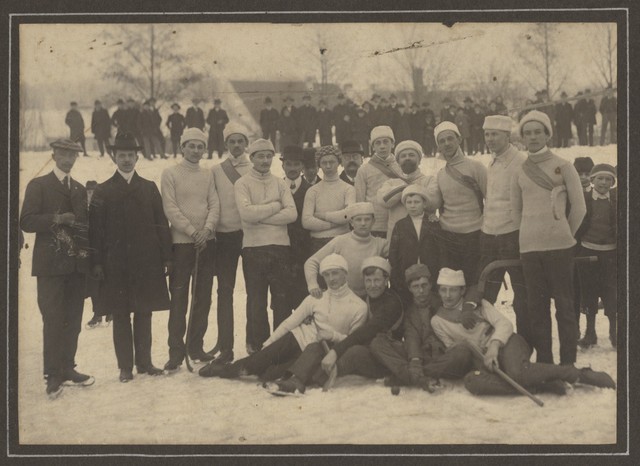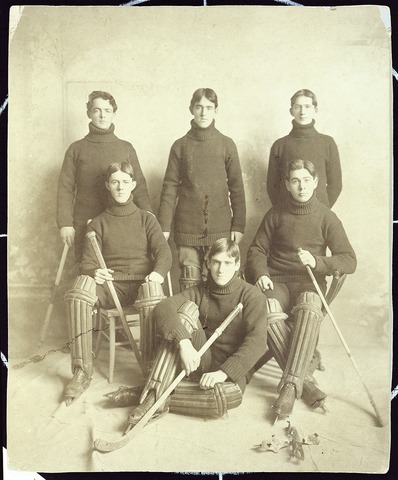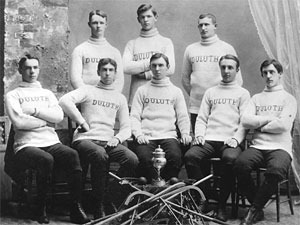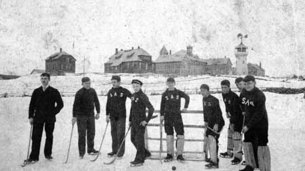ICE POLO
In Ice Polo a ball was used instead of a puck, and a much heavier and stouter stick is employed, but the cardinal point wherein ice polo differs, is the absence of any rule forbidding off side play and the almost universal one handed use of the ice polo stick. Consequently ice polo was a more open game, the field of players being continually seperated and the tries-for-goal being made from passes from unlimited directions.

Ice Polo games were played on outdoor fields or ponds. Some covered roller skating rinks were flooded in the winter and used for ice polo games.

HISTORY
One of the first Ice Polo clubs was organized by Frank Barron in St. Paul, Minnesota in 1883 - The St. Paul Polo Club.
Like many other polo players, Barron moved from rink to ice. Within a year, clubs in St. Paul, Minneapolis, and Stillwater had organized a Northwestern League.
The Massachusetts Ice Polo League was a principle body fostering the game for university teams, and The New England Skating Association introduced a ice polo league for high schools.
The 1st ice polo tournament was held in conjuction with the Saint Paul Winter Carnival in January, 1887 at the palace grounds.

The mid 1890s were ice polo’s brief ascendancy in the United States. Students at Brown, Yale and Harvard universities, M.I.T., Boston College, and Tufts organized teams, as did students in a dozen Greater Boston high schools. Ice polo was even more organized in Metropolitan New York, with the opening of three artificial ice rinks in 1896. Yale and Brown teams played against teams representing established athletic clubs, such as the Montclair Athletic Club, and against dedicated polo clubs, such as the Brooklyn Ice Polo Club or the Passaic (New Jersey) Ice Polo Club.
One of the finest ice polo teams ever to play, the Cambridge Ice Polo and Hockey Team won 23 straight matches vs both universities and Massachusetts Ice Polo League play in 1896- 97. The team players included W. E. Jewell Jr. - Captain, H. A. Hopkins, N. Tobey, Howard Glidden, Mark Lyman and Jack Corbett.
In Michigan’s Upper Peninsula, the roller polo teams in Marquette, Calumet, Ishpeming, and Houghton also moved their indoor games to ice. Like New England, Minnesota, and Canada, the Upper Peninsula probably had a long tradition of informal hockey-like games, with skates, ball, and sticks. What was now different in all of these locations was a code of rules, borrowed from roller polo. The first Spalding Hockey guide (published in 1897) was actually entitled Official Ice Hockey and Ice Polo Guide. While mostly on hockey, it contained a small section on ice polo.

Boston College Ice Polo Team - 1896
Ice Polo continued to be played in the large cities in the late 1890s, with St. Paul being the leader, but the game of Ice Hockey had gradually become the prefered sport, and interest in Ice Polo began to decline.

The last state championship was won by Duluth Polo Club in 1899.




































